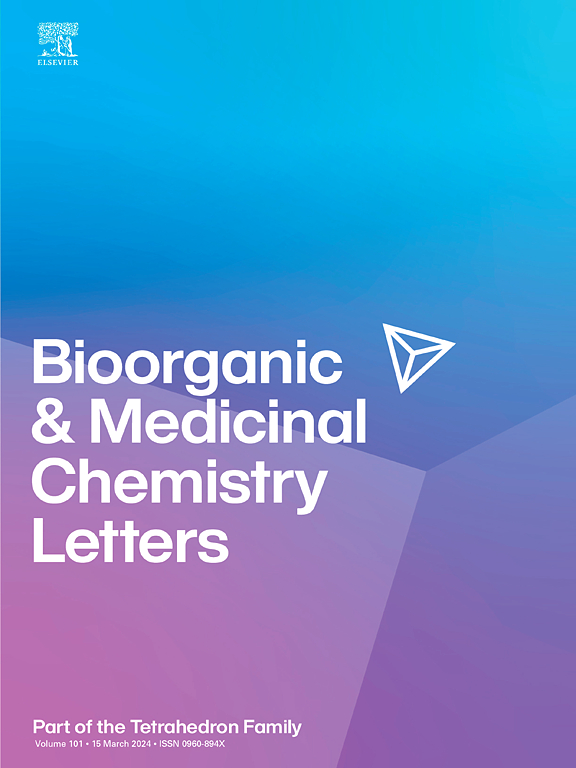裂解催化核修饰17EV1衍生的MNAzyme用于生物传感器设计。
IF 2.2
4区 医学
Q3 CHEMISTRY, MEDICINAL
引用次数: 0
摘要
MNAzymes是由DNAzymes (10- 23,8 - 17,17e等)催化核在某些位置分裂而衍生而来,在这个三组分体系中,额外引入一个寡核苷酸(称为起始寡核苷酸)来恢复催化核和催化活性。因此,有了这种起始寡核苷酸,MNAzymes作为检测生物传感器的应用已经大大扩展到广泛的感兴趣的分析物。然而,MNAzymes的分裂催化核比完整的DNAzymes活性低,许多设计都集中在信号传导方法上以获得更好的性能。本文以miR-21和miR-155为起始寡核苷酸构建17EV1中的MNAzymes,并对裂解催化核进行化学修饰,通过6-(3-氨基丙基)-2'-脱氧腺苷(化合物1)取代残基A15,得到两个修饰的MNAzymes (MNAzyme-21-1和MNAzyme-155-1)。采用荧光信号转导法,miR-21和miR-155的检出限分别提高约4.9倍和12倍。由于MNAzyme组分的可编程性,修饰后的MNAzyme可以进一步适用于其他分析物,并与其他检测方法结合使用以获得更好的性能。本文章由计算机程序翻译,如有差异,请以英文原文为准。

Improvement of MNAzyme derived from 17EV1 by modification on the split catalytic core for biosensor design
MNAzymes were derived from catalytic DNAzymes (10–23, 8–17, 17E, et al) with a split catalytic core at certain positions, an extra oligonucleotide (termed as initiating oligonucleotide) was introduced to recover the catalytic core and the catalytic activity. With this initiating oligonucleotide, thus, the applications of MNAzymes as the detection biosensors have been expanded dramatically to a wide range of analytes of interest. However, the split catalytic core of MNAzymes is less active than the intact DNAzymes, many designs were concentrated on the signaling methods for a better performance. Here, MNAzymes from 17EV1 were constructed with miR-21 and miR-155 as the initiating oligonucleotides, and chemical modification on the split catalytic core was conducted, by the substitution of the residue A15 with 6-(3-aminopropyl)-2′-deoxyadenosine (compound 1), two modified MNAzymes (MNAzyme-21-1 and MNAzyme-155-1) were obtained. With fluorescence signaling method, the limit of detection for miR-21 and miR-155 could be improved for about 4.9 and 12-fold, respectively. With this critical element, the modified MNAzyme could be further adapted for other analytes and combined with other detection methods for better performance, due to the programmability of MNAzyme components.
求助全文
通过发布文献求助,成功后即可免费获取论文全文。
去求助
来源期刊
CiteScore
5.70
自引率
3.70%
发文量
463
审稿时长
27 days
期刊介绍:
Bioorganic & Medicinal Chemistry Letters presents preliminary experimental or theoretical research results of outstanding significance and timeliness on all aspects of science at the interface of chemistry and biology and on major advances in drug design and development. The journal publishes articles in the form of communications reporting experimental or theoretical results of special interest, and strives to provide maximum dissemination to a large, international audience.

 求助内容:
求助内容: 应助结果提醒方式:
应助结果提醒方式:


